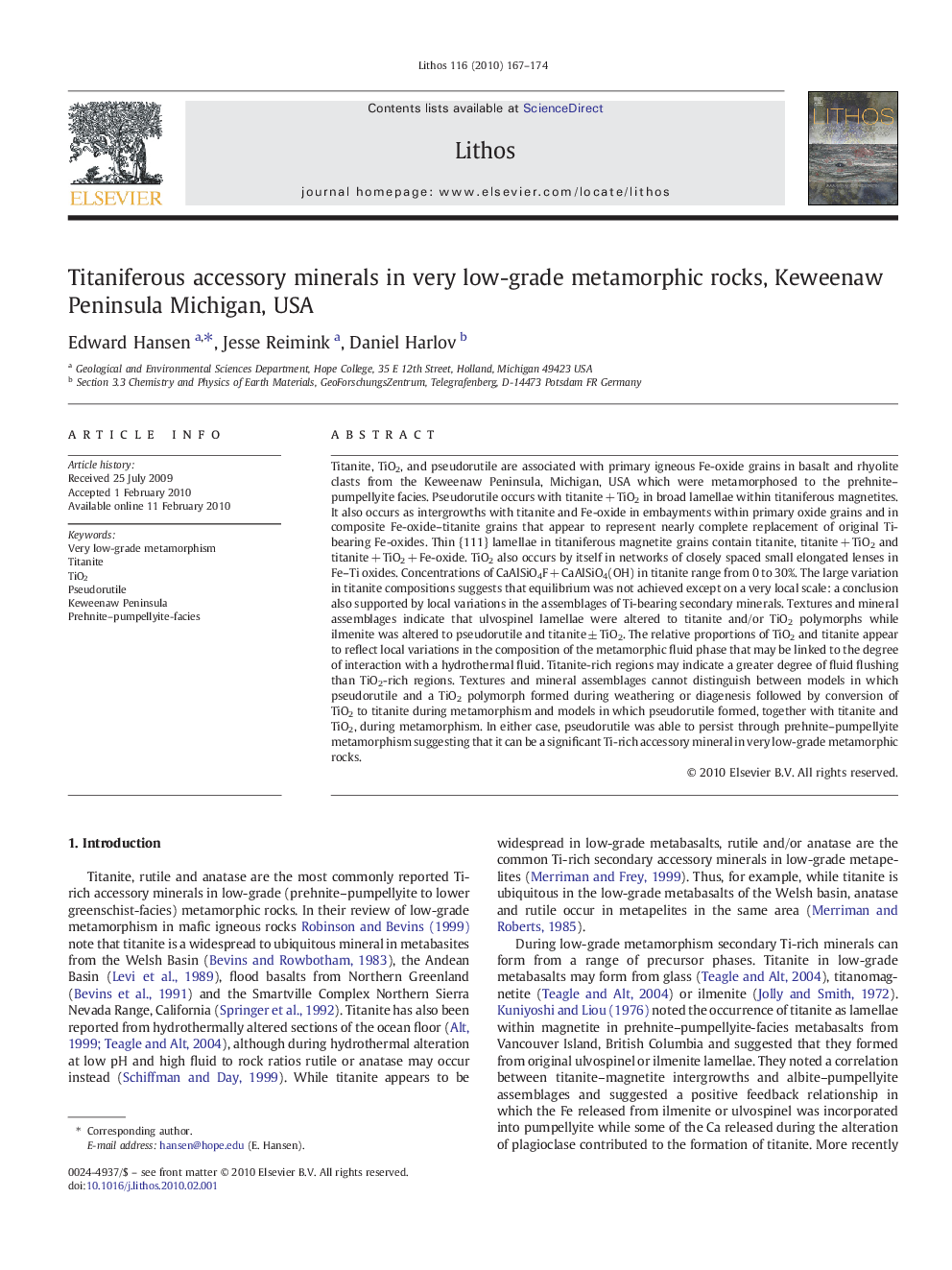| Article ID | Journal | Published Year | Pages | File Type |
|---|---|---|---|---|
| 4717114 | Lithos | 2010 | 8 Pages |
Abstract
Titanite, TiO2, and pseudorutile are associated with primary igneous Fe-oxide grains in basalt and rhyolite clasts from the Keweenaw Peninsula, Michigan, USA which were metamorphosed to the prehnite-pumpellyite facies. Pseudorutile occurs with titanite + TiO2 in broad lamellae within titaniferous magnetites. It also occurs as intergrowths with titanite and Fe-oxide in embayments within primary oxide grains and in composite Fe-oxide-titanite grains that appear to represent nearly complete replacement of original Ti-bearing Fe-oxides. Thin {111} lamellae in titaniferous magnetite grains contain titanite, titanite + TiO2 and titanite + TiO2 + Fe-oxide. TiO2 also occurs by itself in networks of closely spaced small elongated lenses in Fe-Ti oxides. Concentrations of CaAlSiO4F + CaAlSiO4(OH) in titanite range from 0 to 30%. The large variation in titanite compositions suggests that equilibrium was not achieved except on a very local scale: a conclusion also supported by local variations in the assemblages of Ti-bearing secondary minerals. Textures and mineral assemblages indicate that ulvospinel lamellae were altered to titanite and/or TiO2 polymorphs while ilmenite was altered to pseudorutile and titanite ± TiO2. The relative proportions of TiO2 and titanite appear to reflect local variations in the composition of the metamorphic fluid phase that may be linked to the degree of interaction with a hydrothermal fluid. Titanite-rich regions may indicate a greater degree of fluid flushing than TiO2-rich regions. Textures and mineral assemblages cannot distinguish between models in which pseudorutile and a TiO2 polymorph formed during weathering or diagenesis followed by conversion of TiO2 to titanite during metamorphism and models in which pseudorutile formed, together with titanite and TiO2, during metamorphism. In either case, pseudorutile was able to persist through prehnite-pumpellyite metamorphism suggesting that it can be a significant Ti-rich accessory mineral in very low-grade metamorphic rocks.
Related Topics
Physical Sciences and Engineering
Earth and Planetary Sciences
Geochemistry and Petrology
Authors
Edward Hansen, Jesse Reimink, Daniel Harlov,
